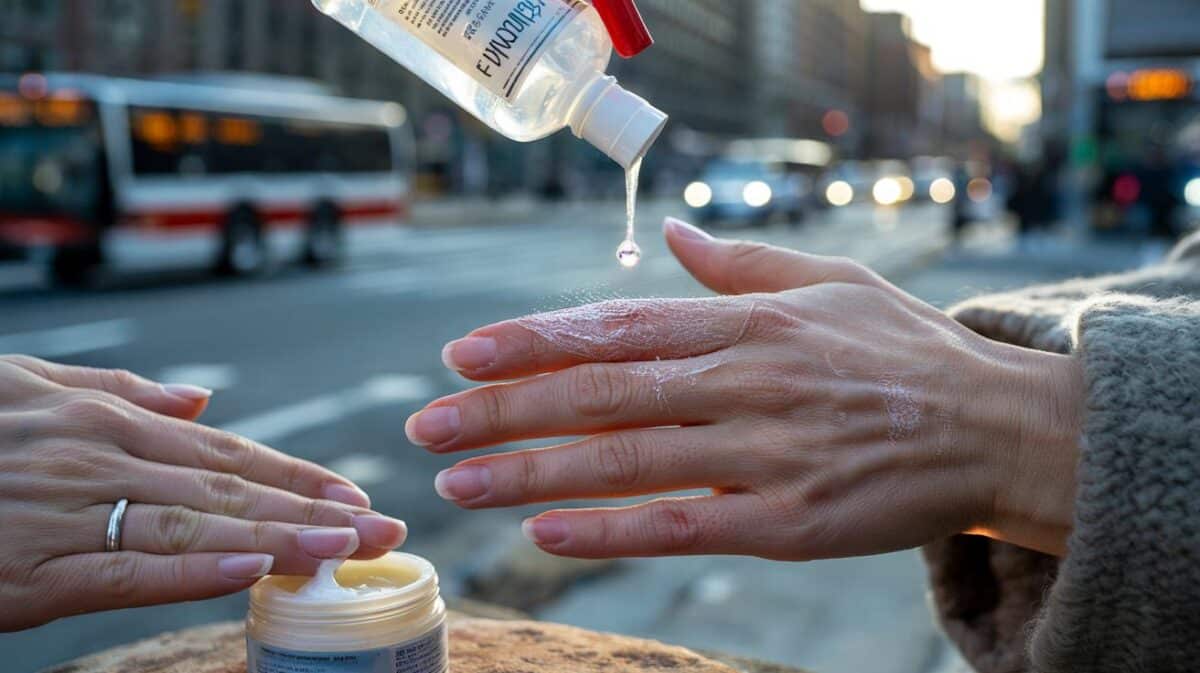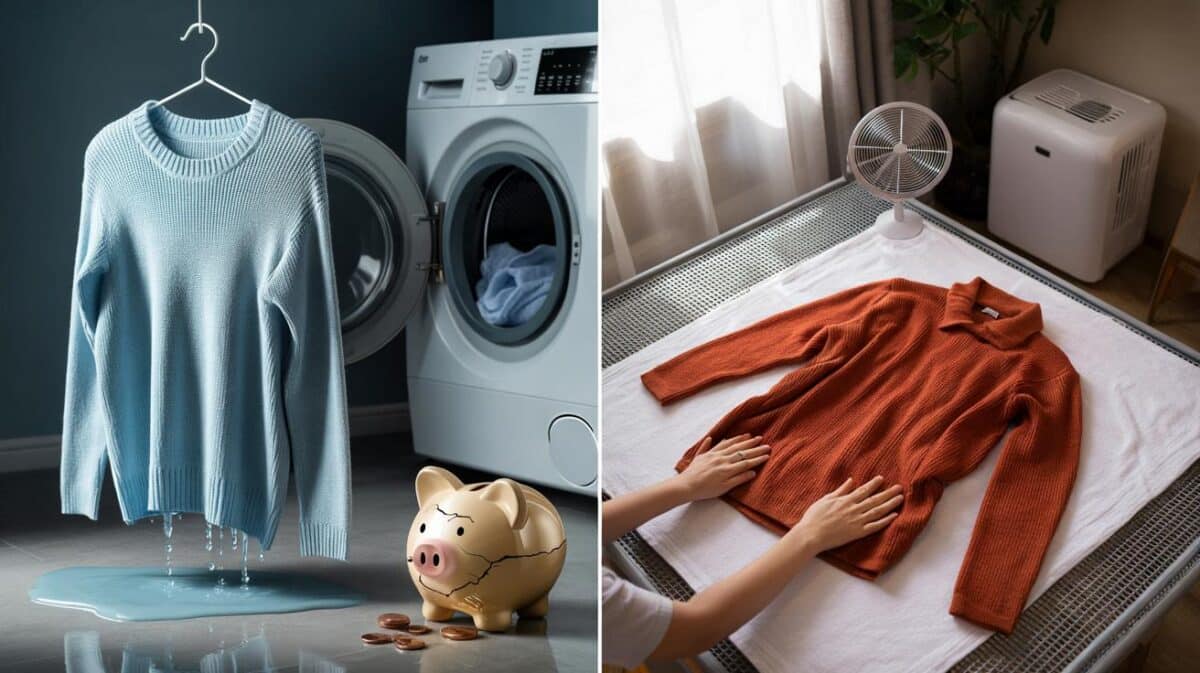There’s a simpler way, and it’s hiding in plain sight in your cupboard.
I watched a friend clean her tiny London kitchen like a pro. The sprays lined up on the worktop looked like a neon parade — glass cleaner, stainless steel polish, limescale remover, “odour neutraliser” in a bottle as bright as sherbet. She sighed at the receipt stuck to the fridge with a magnet and said, half-joking, that it cost a small fortune to make a flat smell “normal”. Then she reached past them all, grabbed an unassuming bottle with a red cap, and the whole room shifted. The taps brightened. The microwave gave up its splatters. The bin stopped arguing with our noses. It wasn’t a miracle. It was routine reimagined. It isn’t a spray.
The one kitchen item that out-cleans your sprays
White distilled vinegar — the clear, no-frills kind — is the budget workhorse your grandparents trusted and supermarkets quietly underprice. **Most shop sprays are mostly water and perfume; vinegar is function in a bottle.** Its mild acidity cuts through limescale, soap scum and greasy fingerprints, and it evaporates clean without leaving filmy residue. The beauty is plain: a single ingredient that pulls its weight across glass, tiles, taps, bins, even the laundry. You don’t need five bottles crowding the cupboard when one stable staple does the heavy lifting.
We’ve all had that moment when the shower screen fogs white, the kettle grumbles with scale, and the window streaks mock you in the afternoon sun. A branded “limescale blaster” will promise a fast fix, but so does vinegar — and it costs pennies per use. A typical multi-surface spray in the UK can run £1–£3 for 500 ml; a supermarket’s own-brand vinegar often lands under £0.50 for the same volume. Two clean microfibres and a splash in a mug turned my bathroom taps from chalky to mirror-bright in minutes. No mystery scent, just the quiet satisfaction of something that works.
Here’s the simple science. Limescale is alkaline mineral deposit, mainly calcium carbonate. Vinegar’s acetic acid nudges it back into solution, so it lifts away with a wipe. That same acidity loosens greasy film on hobs and fingerprints on stainless steel. It also neutralises many odours by binding with basic molecules so smells don’t just get masked, they fade. Vinegar isn’t a hospital-grade disinfectant — and shouldn’t pretend to be — but for daily grime, it’s a steady, repeatable result. Think of it as your reset button between deep cleans.
How to use it today (and what to avoid)
Start with a simple mix: 1 part white vinegar to 1 part water in a clean spray bottle for glass, mirrors, tiles and stainless steel. For stubborn scale on taps or shower heads, use it neat: soak a cloth, wrap the area, leave 10–20 minutes, then wipe and rinse. For microwaves, a bowl with equal parts vinegar and water, heat for 3 minutes, let the steam sit for 2, then wipe — the splatters surrender without a fuss.
Common pitfalls are easy to dodge. Skip vinegar on marble, limestone, travertine and concrete worktops; acid can etch those surfaces, and it’s not pretty. Same for some hardwood finishes and waxed furniture. Rinse metal parts you’ve soaked to keep them happy, and don’t soak rubber seals for long stretches. Let’s be honest: nobody actually does that every day. But doing a quick vinegar pass weekly keeps grime from becoming a saga, and your future self will thank your present one.
There’s one red line: **Never mix vinegar with bleach — ever.** The reaction releases chlorine gas, which is dangerous. If you need disinfecting during illness season, use a proper disinfectant separately, then return to vinegar for daily maintenance.
“Vinegar is my Monday-to-Friday cleaner; disinfectant is my Saturday back-up,” a professional cleaner told me. “Most weeks, Monday-to-Friday wins.”
- Windows and mirrors: light mist of 1:1 vinegar-water, wipe with microfibre in an S-pattern.
- Shower screen and taps: neat vinegar on a cloth, 10 minutes, then rinse and dry.
- Bins and fridge: wipe walls with diluted vinegar to deodorise without perfumed after-smell.
- Kettle and coffee maker parts (check manual): descale with 1:1 mix, flush with fresh water twice.
- Laundry booster: 1/2 cup in the rinse drawer to soften towels and calm stubborn smells.
The ripple effect: less clutter, cleaner air, smaller bills
Strip the cupboard of duplicates and the house gets easier to run. One bottle and two cloths beat a rainbow of half-empties because you lose decision fatigue; you just reach, spray, wipe, done. That clarity spills into the room itself: fewer artificial fragrances and less heavy residue floating around. *You breathe the room, not a can of “ocean breeze.”* The cost-of-living wins aren’t theoretical either. Refill a spray bottle from a 5-litre jug of vinegar and you’re buying cleaning power, not packaging and marketing. People share more when the fix is small and repeatable, and this one is both.
| Point clé | Détail | Intérêt pour le lecteur |
|---|---|---|
| Cost per clean | Own-brand white vinegar can be pennies per use versus pounds for multiple sprays | Cuts monthly spend without cutting results |
| Versatility | Glass, taps, tiles, bins, laundry, microwave steam-clean | One item replaces a shelf of products |
| Cautions | Avoid natural stone and mixing with bleach; rinse metals | Protects surfaces and keeps routine safe |
FAQ :
- Does vinegar disinfect like bleach?Not in the same way. Vinegar can reduce some bacteria and odours, but for illness or foodborne risks, use an approved disinfectant separately.
- Will my home smell like a chip shop?The scent flashes off as it dries. Crack a window, and the sharp note fades within minutes, leaving a neutral room.
- Is it safe on stone worktops?No — skip marble, granite, limestone and concrete. Use a stone-safe cleaner there and keep vinegar for glass, tiles, taps and more.
- What’s the best dilution?1:1 with water for daily glass and wipe-downs; go neat for limescale. For laundry or kettle descaling, start with 1/2 cup and adjust.
- Can I use it on stainless steel appliances?Yes, lightly. Spray the cloth, not the appliance, wipe along the grain, then buff dry to keep streaks away.








